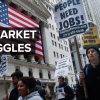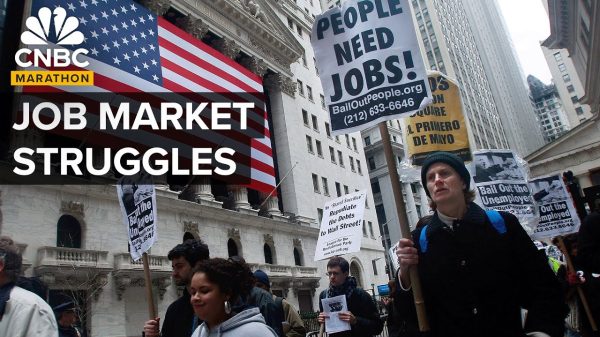Long-duration Treasury yields fell sharply on Thursday as investors weighed cooler economic data and comments from Walmart’s chief executive indicating he is bracing for a “period of deflation.”
Fed Gov. Lisa Cook also said Thursday that a soft landing for the economy remains possible, but isn’t a guarantee.
What’s happening
-
The yield on the 2-year Treasury
BX:TMUBMUSD02Y
fell 7.4 basis points to 4.84%. Yields move in the opposite direction to prices. -
The yield on the 10-year Treasury
BX:TMUBMUSD10Y
retreated 9.1 basis points to 4.44%. -
The yield on the 30-year Treasury
BX:TMUBMUSD30Y
fell 6.9 basis points to 4.622%. - The 10-year yield is down 54 basis points from the October peak and the 30-year is 47 basis points lower, according to Dow Jones Market Data.
What’s driving markets
Benchmark Treasury yields fell sharply Thursday, with the 10-year Treasury yield down more than 50 basis points from its 16-year peak of 5% in October.
Investors have piled into bonds in recent weeks amid hopes that easing inflation and a cooling economy will allow the Federal Reserve to start cutting interest rates by the middle of next year. Bond prices and yields move in opposite directions.
Traders on Thursday focused on further signs of cooling U.S. economic activity and on quarterly results from mega retailers, including from Walmart Inc.,
WMT,
particularly after chief executive Doug McMillion said he expects to see deflation in the coming months, during the company’s third-quarter earnings results early Thursday.
“I think maybe there is a sense that an inventory glut could happen, although I’m not totally convinced of that,” Will Compernolle, macro strategist at FHN Financial, said in a phone call.
Compernolle also sees signs that deteriorating growth sentiment is driving down yields further out on the Treasury market curve.
Fed Gov. Lisa Cook on Thursday said she thinks a “soft landing” for the economy was possible, but not guaranteed, in a speech at the San Francisco regional bank.
Cleveland Fed President Loretta Mester said that easing monetary policy was not “part of the conversation right now,” in a CNBC interview on Thursday.
Traders were pricing in at least a 97% probability that the Fed will leave interest rates unchanged at a range of 5.25% to 5.50% after its next meeting on December 13th, and the subsequent meeting on Jan. 31, according to the CME FedWatch tool.
See: Stock and bond investors are convinced the Fed is finished with rate hikes. Why it isn’t a done deal.
The chances of a 25 basis point rate cut at the May meeting were pegged near 33%, up from 30% a month ago.
The Labor Department said the number of Americans who applied for first-time unemployment benefits last week jumped to a three-month high of 231,000, suggesting some softening around the edges of a strong U.S. labor market
The Philadelphia Fed said Thursday its gauge of regional business activity improved slightly to negative 5.9 in November from negative 9 in the prior month. Any reading below zero indicates deteriorating conditions. Economists polled by The Wall Street Journal expected a negative 7.5 reading in November.
In other economic data, industrial production fell 0.6% in October, while builder confidence fell for a fourth straight month in November as mortgage rates reached 8%.
What are analysts saying
“[T]his is now the seventh time in the last two years we’ve had a very clear example of markets getting excited about a dovish pivot, and on the previous six those dovish expectations have entirely unwound again,” warned Jim Reid, macroeconomic strategist at Deutsche Bank.
“It all started with the Omicron variant being seen as the reason the Fed wouldn’t be able to raise at all in 2022…At some point there will be a dovish pivot, and this could be closer than the others to it, but be wary that we’ve now been to this well seven times in two years,” Reid added.
Read the full article here













